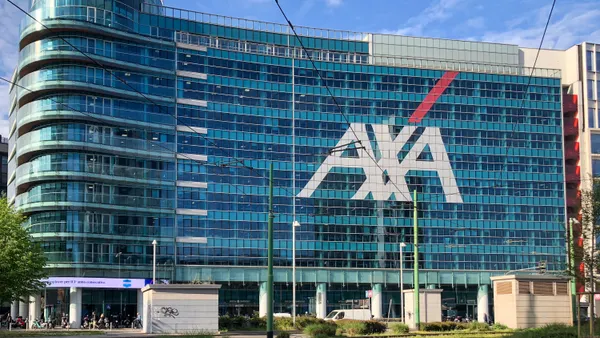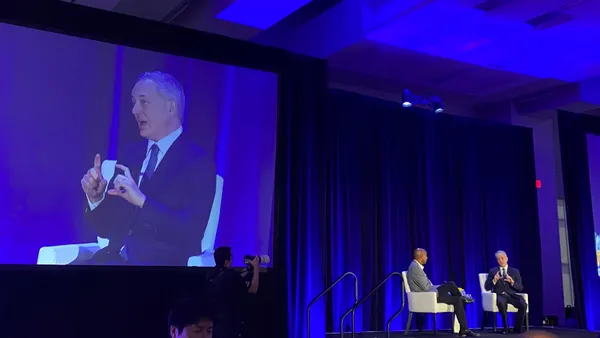Correction: A previous version of this article misstated Frey's start date, she started in 2011.
When Bridget Frey entered Redfin's Seattle headquarters in 2011, she was one of the first female engineers. Four years later, Frey became the company's CTO. During that time, she took Redfin's gender diversity from almost zero to nearly 30%.
Today, Redfin, a residential real estate company that provides web-based real estate database and brokerage services, has one of the most diverse engineering groups in the tech industry. To get there, Frey wasn't afraid to make big changes. She led the efforts to disclose gender diversity pay numbers, which forced the company to work harder toward fostering diversity and equality.
Frey is working to put an end to the whiteboard interview process, something that has been long criticized by the engineering community for creating an adversarial environment where only a certain type of candidate typically excels (mainly, white males). Now, Frey is de-emphasizing them in the interview process and experimenting with alternatives, such as take-home tests. Today, Frey frequently speaks at events and on panels promoting equality in the tech sector.
With almost every tech company working to recruit more female engineers and often only eking out tiny gains, Redfin stands as an example of a company bringing about change to the industry. CIO Dive recently spoke with Frey about how she was quickly able to accomplish so much. This conversation has been edited and condensed.
How did you first get interested in tech?
Frey: I started coding when I was five years old. My dad bought an Apple IIe. He's a dishwasher sales and repairman. To him, the computer was just like a dishwasher — you get a manual and you figure out how it works. He brought this thing home and put it in the middle of our kitchen, and the two of us set to work, figuring out what to do with it.
As I grew up, I continued that interest in computers. I majored in computer science at Harvard. After that, I worked at a series of growing startups before landing at Redfin.
Why is it so important to you to increase gender diversity at Redfin?
Frey: Because Redfin is trying to solve problems in the real estate space, we really need to make sure that our team reflects our customers, so that we can bring all of those perspectives together. I think when you have diverse teams, you can get more ideas out on the table, you're more likely to not miss something. You're more likely to know, upfront, that you're representing all the different ways that people might approach buying and selling a home. It's really about getting all those diverse perspectives.
More broadly, why is it so important to increase diversity in tech overall?
Frey: It helps develop better products. We have specific examples where we have developed a better product because we had a diverse team tackling a problem. For example, we were developing a feature called "Shared Search," which is where if you're searching for a home and there's someone else that you're searching with and you want to share your home search with that person, you can actually link your accounts together. In some of the early versions of the mocks, we proposed terminology like, "Searching with a spouse."
We had a team that included men and women and LGBT and the folks on that team looked at that and said, 'You know, that's not inclusive language. Not everyone has a spouse. How do we make sure that we're including all the different types of relationships people might have?' We therefore changed the product design to say, "Searching with someone." That means that all of people who saw that prompt, there's so many more people that might connect with it and might choose to use the feature.
Why is diversity so difficult to accomplish in tech? What are some of the barriers?
Frey: There's a lot of discussion about the so-called pipeline problem that people just aren't applying for the jobs, that women aren't graduating from college in the same numbers as men. That's certainly an element of what's going on, but I think that the true difficulty for the tech industry is building an inclusive environment at every step of the way. Through school, through how the media portrays what it's like to be in the software industry, all the way through to what it's like to be at a company.
We had to work very hard at creating an inclusive culture. It's work that we do every day. It's work that never stops. We have a saying that, "Culture is something that we create, not consume." That's short-hand for saying that, it's on all of us to create the type of place that's friendly to all the people who work here.
What suggestions do you have for other tech companies? How can they start down this path of improving diversity within their organizations?
Frey: We've taken an approach, similar to an engineering approach, that inclusivity is just like a software project, where you come up with all the features you want to develop, you find all the bugs, you list them all out in detail, and you prioritize what you're going to work on. If a company wants to make a comprehensive change, that is the amount of work that's created.
We essentially created a backlog of all the diversity and inclusion ideas we had. We allowed any engineer to come up with ideas. We even set up groups of engineers to do research on what other companies were doing.
It covered a number of different phases, everything from how we're attracting candidates, to how we're interviewing and choosing them, all the way through to how we promote people and retain them long-term. We have specific activities that are assigned to each area.
That sounds like an approach that could be scaled for a bigger technology company as well?
Frey: Yes. The more people you have, the more bugs you can fix, the more features you can develop. I think it's the same with diversity and inclusion projects. It's also important to prioritize certain things.
This year, in our diversity and inclusion plan, we decided to prioritize working with black and Latino engineers. We specifically put a little less of our priorities into women, since our numbers there are now higher. We felt that by explicitly saying, "We are going to try to build connections with black and Latino engineers, work on our inclusivity for black and Latino engineers, make sure that our college programs are focused on black and Latino engineers," that we could make some meaningful progress in that area, versus spreading out our work too widely.
Any other advice for tech companies looking to improve employee diversity?
Frey: We've been surprised that when we've worked on diversity and inclusion initiatives to try to change our numbers and attract more candidates and keep them, those projects also ended up being really good for our current employees, as well.
For example, we developed a whole set of new hire training, where we developed hands-on labs new employees could take. That helped us bring on people from nontraditional backgrounds, from bootcamp programs, who maybe don't have the full four-year computer science degree. That also really helped senior engineers we brought on, because they can go through all that training material as well and get ramped up even more quickly.













